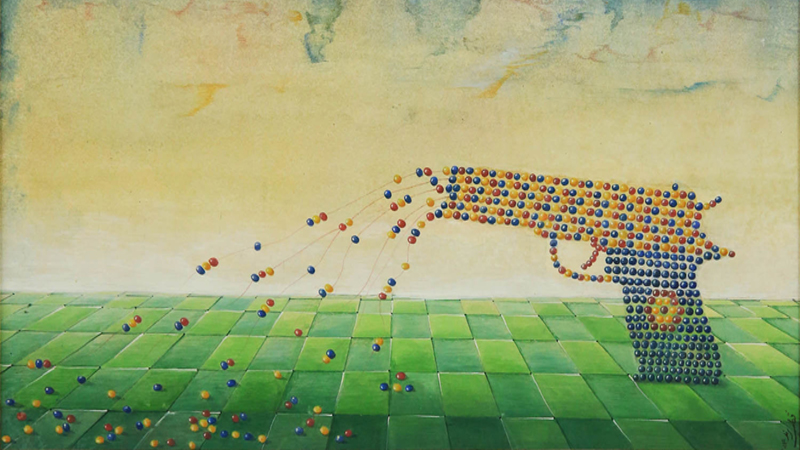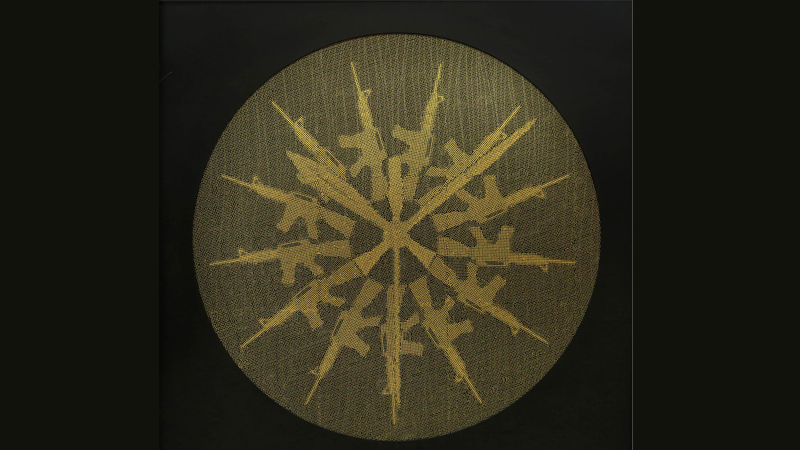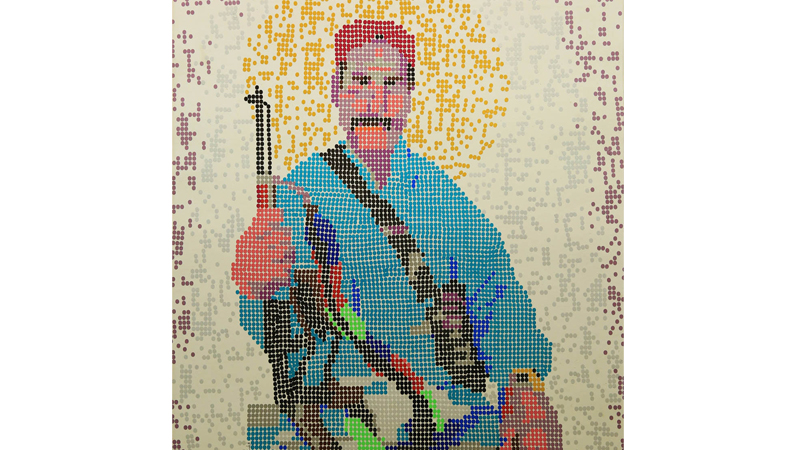
This time, at O Art Space, it was not just another exhibition but a homage to one of the art enthusiast who contributed various artworks of par excellence in the field of art. That is why, this time, my visit to O Art Space was unusual. Paintings (a lot of them) were there, visitors were there but the artist (himself) was nowhere to be seen.
On 12th October, O Art Space organised an exhibition of around 30 paintings of Qutub Rind; his paintings were further accompanied by 100 more paintings of various contemporaries artists with myriad themes. Every room, every hall and even the staircase was wreathed with hanging paintings. Interestingly, the title of the show served to be discernible, “Art for Artist & Contemporaries”. The show served to be a picturesque eulogy, the proceeds of which are for Rind’s family.
His paintings leave a deep mark on the viewer’s mind and compels him to question the invention of gun as a blessing or damnation
Qutub Rind, the Baloch artist, was murdered on July 17th. His demise not only deprived the Art Fraternity of immense talent but also left his family in grief.
Sitting on the bench at the center of the gallery, and looking around at the sublime paintings indeed was an experience one of its kind. Rind’s use of chamak pati (shiny/reflective tape) technique, cut in small circular shape and pasted in Baloh traditional embroidery patterns, formed realistic images of our society. In one of his paintings, the words, “Ya’Ali Madad – Qutb rind” summed up the entire idea and emotions behind all those paintings whose main motif was the Weapon – a gun.
His paintings leave a deep mark on the viewer’s mind and compels him to question the invention of gun as a blessing or damnation.
His technique, another version of pointillism, serves to be his distinguishing trait. His paintings deal with the idea of real in the altered context. In his own words, ‘Living in the times, where there is Red everywhere, my image making practice deals with the idea of altering the context of violent tools with aesthetically beautiful and harmless objects such as beads/moti.’
Some of the pieces on display depicted Baloch men and children either holding guns or playing with them. Most of his color palette was taken from Mughal Miniatures and patterns from Sindhi and Balochi culture. The embroidery references in his work suggest the complex emotional and physical states lived by the woman in his culture and the way she turns her emotions into beautiful embroidered pillows and spreads.
Who knew that the very idea of violence and guns that he aspired to alter would take his life! Few days before his murder, Rind had an exhibition planned with O Art Space. And so this show exhibits his final works along with his contemporaries in an effort to acknowledge Rind’s art and support his family with the open hearted contribution of art fraternity.
Published in Daily Times, October 22nd 2018.

